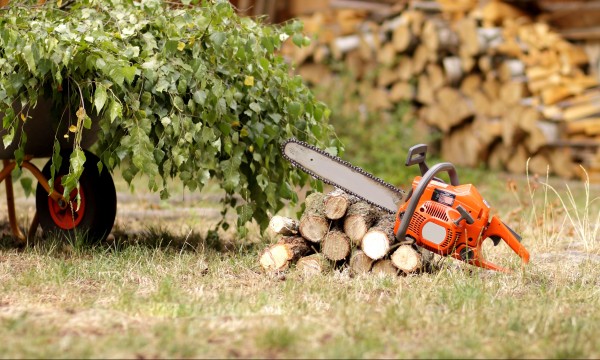Garden power tools don't require much maintanence, but the bit of work there is to put into them goes a long way. Knowing how to treat small engines, and getting fuel and oil requirements right will make your garden and yard power tools last longer and run better.
- Browse Categories
- All Tips
-
Home & Garden
- All
- Appliances
- Bathroom
- Cleaning
- Crafts
- Decorating
- Electrical
- Flooring
- Furniture
- Garage Door
- Gardening
- Green Living
- Heating
- Home Alarm Systems
- Home Maintenance
- Home Remedies
- Home Security
- Home Staging
- House Sitting
- Junk Removal
- Kitchen
- Lawn Care
- Lock Systems
- Moving
- Outdoor Living
- Pest Control
- Plumbing
- Renovation
- Roofing
- Snow Removal
- Storage
- Tools
- Tree Service
- Health
- Family
- Travel
- Auto
- More Tips

5 maintenance tips for garden power tools
July 29, 2015

1. Avoid overheating small engines
Whether a two-stroke or four-stroke engine runs your equipment, it is likely to be damaged if the engine runs too hot. To avoid this, subscribe to these rules:
- If the engine is a four-stroke, keep the oil reservoir filled to the correct level and change the oil at the intervals specified by your owner's manual.
- Clean the engine of sawdust, clippings and other debris to facilitate cooling.
- Cool the engine slowly. Engines run hot. You can increase their life expectancy by letting the engine idle for several moments after you've given it a tough workout.
- Mix fuel and oil thoroughly for two-stroke engines, or the oil may pool at the fuel tank bottom, where it can't help keep the engine running cool.
2. Replace and gap spark plugs
To ensure quick starts and to keep your small garden equipment engines in peak running condition, change the spark plug after every season or two. First, clean around the old spark plug so that debris doesn't fall into the hole when you remove it. Then remove the plug with a socket wrench and a spark plug socket correctly sized for the plug. Gap the new plug according to the specs in your owner's manual. The gap is the space between the plug's centre and the L-shaped side electrode. You'll need an inexpensive feeler gauge, sold in auto supply stores, and pliers to set the gap. Screw in the new plug so that it's snug but not tight.
3. Add a fuel preservative
If you use gasoline-powered equipment infrequently or will be storing it for the season soon, add a fuel preservative to your gas, using the amount recommended on the can label. Preservatives lengthen the shelf life of gasoline and help prevent engine corrosion from fuel deterioration caused by the buildup of gum and other deposits in the fuel system. Preservatives also improve engine performance and ensure faster starts.
4. Get fuel-to-oil ratios right
The easiest way to ensure the proper ratio of fuel to oil for two-stroke engines is to buy small containers of two-stroke oil that are sized to automatically give you the correct ratio when mixed with a gallon of gasoline. Choose a two-stroke oil that comes with a fuel stabilizer. It will protect your engines from rust, wear and corrosion in addition to maintaining fuel quality.
5. Don't use the wrong oil
Never use automotive engine oil when mixing fuel and oil for a machine with a two-stroke engine. Use two-stroke engine oil or whatever other oil is specified in your owner's manual.
Your garden power tools help you get the little jobs done — help them do the best job possible by keeping them in tip-top shape with these handy maintenance tips.






